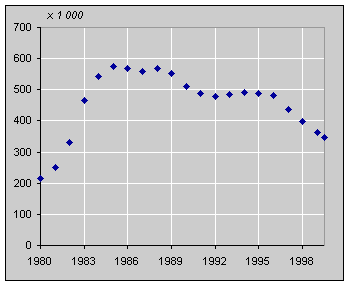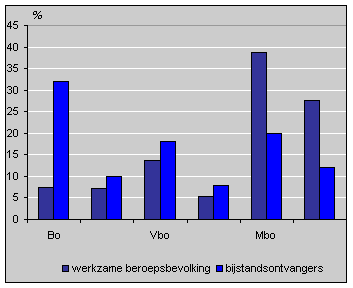Fewer people on supplementary benefit

At the end of June 2000, 347 thousand people in the Netherlands were receiving supplementary benefit, 30 thousand fewer than one year previously. The number of people receiving this benefit in the Netherlands started to decrease in 1994. But since 1996, when economic growth started to pick up speed and new schemes, such as the Wet inschakeling werkzoekenden (WIW), were introduced to stimulate employment for a number of job seeking categories, the drop in the number of people claiming supplementary benefit has been very substantial.
Supplementary benefit payments

Half of claimants want a job of at least 12 hours a week
The fall in the number of people claiming supplementary benefit was largest among young people actively looking for a job of 12 hours or more a week. Older claimants find it more difficult to get off social security. This means that the percentage of people in the age group 35-64 years on supplementary benefit rose to 62% in 1998, up from 52% in 1992.
In 1998 nearly half of claimants wanted a job of at least 12 hours a week. About one in three did not want to work, or wanted to work for less than 12 hours a week; 13% had a job and the remainder were either no longer obliged or unable to work.
Claimants have low levels of education
Most people on supplementary benefit have completed only lower levels of education. One in three have primary education as their highest completed level of education. This is nearly five times the proportion of people with this level of education in the employed labour force.
Supplementary benefit claimants and employed labour force by education, 1998

Seven percent of the employed labour force aged 15-64 years had primary education as their highest completed level of education. About one in eight people on supplementary benefit had a vocational college diploma or university degree. For people in employment this was just over one quarter.
John Kartopawiro